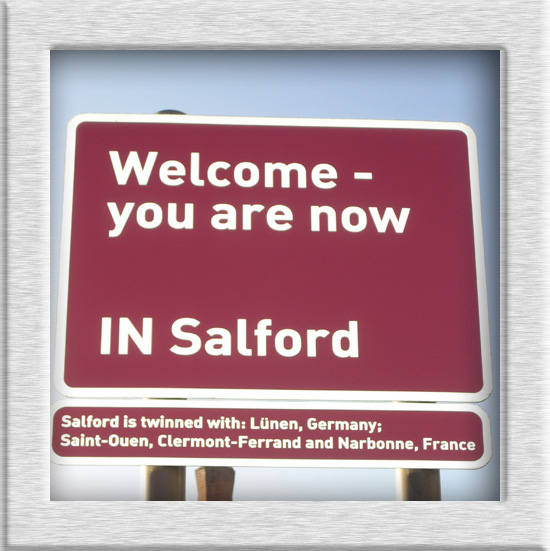Salford, Lancashire.
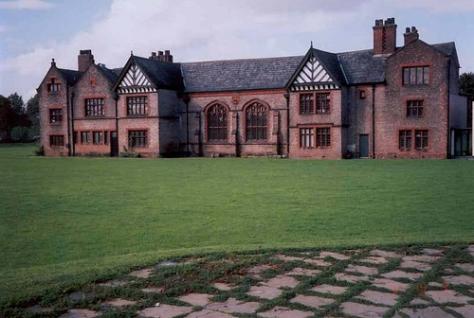
|
Salford's Local History.
Salford's early history was marked by the granting of a charter by Ranulf, Earl of Chester, about 1230 A.D. The parchment, which made Salford a free borough, was written just 15 years after the Magna Carta. In the days of Edward the Confessor, Manchester formed part of the Royal Manor of Salford, which was also called Salfordshire. During Tudor times its most famous family was the Radclyff's of Ordsall Hall, who featured briefly in the Civil War. Legend has it that Guy Fawkes was a friend of the family and the Gunpowder Plot hatched during a visit here. Originally, a village on the banks of the Irwell, Salford grew through industrialization. Cloth and silk were made here, as well as the processes of dyeing, fulling and bleaching. It eventually grew to be one of the greatest cotton towns, although the opening of the Manchester Ship Canal in 1894 and the construction of Salford Docks also brought employment for almost a century. Salford became one of the first county boroughs in the country, but City status was not conferred until 1926.
|
Salford in the Domesday Book.
The earliest mention of the Salford Hundred occurs in William the Conqueror's great survey, the Domesday Book, made for in 1086.
It was recorded that King Edward the Confessor had held the Manor, (or Hundred), in 1066 when it was mostly forest land, divided into 21 berewicks (or sub-manors) each held for the King by a thegn. (attendant or servant) William granted the land to Roger de Poitou who parcelled it out to his own followers.
By 1086 the hundred was again in the King's hands and was held intermittently by the monarch over the next three centuries.
Roger de Poitou also created the (lesser) Manor of Manchester which has ever since been separate in matters of Local Government from Salford. To this day Salfordians proudly boast being the oldest of the two cities, and object volubly to being called "Mancunians".

|
William the Conqueror.
Also known as William I of England, was the King of England from Christmas, 1066 until his death. He was also William II, Duke of Normandy, from 3 July 1035 until his death. Before his conquest of England, he was known as "William the Bastard" because of the illegitimacy of his birth. William was already known as "the Conqueror" before 1066 due to his military success in Brittany. To press his claim to the English crown, William invaded England in 1066, leading an army of Normans, Bretons, Flemish people, and Frenchmen (from Paris and Ile-de-France) to victory over the English forces of King Harold Godwinson (who died in the conflict) at the Battle of Hastings, and suppressed subsequent English revolts in what has become known as the Norman Conquest.
His reign, which brought Norman-French culture to England, had an impact on the subsequent course of England in the Middle Ages. The details of that impact and the extent of the changes have been debated by scholars for over a century.
In addition to the obvious change of ruler, his reign also saw a program of building and fortification, changes to the English language, a shift in the upper levels of society and the church, and adoption of some aspects of continental church reform.
|
Salford during the Civil Wars.
Unlike Manchester, during the Civil War, Salford was Royalist. The siege of Manchester which started the Civil War was launched from Salford.
Salford was also devoutly Jacobite and supported the Pretender to the Throne of England, Charles Edward Stuart (Bonnie Prince Charlie), whom they hosted on his ride through the area in November of the 1745 Rebellion. Blessed by the Reverend John Clayton, a friend of John Wesley, he left for his campaign in the South, only to return defeated 9 days later. Two local men, Tom Syddall and Thomas Deacon, who had joined the Manchester Regiment to help Charles Stuart fight in the Rebellion, were captured and beheaded - their heads brought back and displayed on the Exchange in Manchester.
Salford in the 18th Century.
By the early 18th century, contemporary maps show Salford as still largely rural, with the major road networks already in place. By 1750 the town was to change dramatically - possibly the most drastic transformation of any town in England, as factories (largely spinning, weaving, dyeing and bleaching) took over the fields, so that nowadays only their names survive to indicate where they were. Salford's growth at this time was marked by some degree of industrialization. Cloth was manufactured, silk weaving was done in the locality, as were dyeing, fulling, and bleaching. By the end of the 18th century the population had reached 7,000, also by the end of the 18th century the canals were in place - the Bridgewater from Worsley, and the Leeds and Liverpool canal. Also The River Irwell had been made navigable all the way to Liverpool.
Salford in the 19th Century.
In the 19th century, the effects of the industrial revolution on Salford was phenomenal. Factories replaced homeworkers and the resident population, which in 1812 was just 12,000, increased by over 58,000 in 1840 to 70,244, and by the end of the century to 220,000. This rapid increase, probably the greatest in the whole of Britain, was reflected in the vast areas of poor quality housing that were built throughout the Victorian period when overcrowding created real social problems.
Houses were crowded together at as many as 80 to the acre. Trade continued to boom, and with the construction of the Manchester Ship Canal and the docks at Salford, the city became an industrial meeting point for all major routes and was receiving raw materials for the whole north west of England, as well as being the main distribution point for manufactured goods being exported out. The fate of Salford during the Industrial Revolution was not an enviable one. Most of the worst effects and excesses of over-industrialization and human exploitation were to be found there. It was not all quite so black - there were some real improvements made to the social and material fabric of late Victorian society. For Example, the first Public Libraries Act was introduced in 1850. Salford had, a year previously, already established a library, museum and art gallery, the first municipal authority in Great Britain to do so.
Modern Salford.
Since the 1960s, Salford has gradually restored itself of the grubby smoky town images of the post-war period. Today it boasts many delightful aspects, from the elegance of ancient Worsley, to the formal civic grandeur of the Crescent, where the Art Gallery and the University of Salford now stand. In the last decades, with the abandonment of the great docks, many acres of dock wasteland have been redeveloped as The Quays project.
Importantly the Manchester Metrolink weaves it's way through the development giving commuters a quick and comfortable way into the city. Waterway frontages have been attractively revamped, trees planted, and attractive new waterside dwellings have been introduced into a hitherto undesirable area, making it now a much sought-after place to live, as well as having major new cultural developments like the Imperial War Museum and the Lowry.
 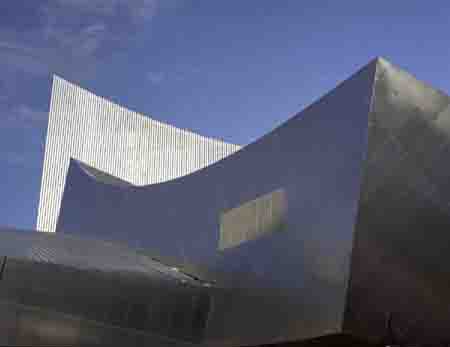

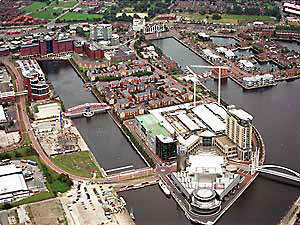
|
The Imperial War Museum (north) Concept.
Opened on 5 July 2002, the long awaited IWM North is situated on the banks of the Manchester Ship Canal on the Trafford wharfside of The Quays about 2 miles from city centre Manchester. It is located diametrically opposite the Lowry Centre on the Salford side, to which it is linked by the dramatic Lowry Footbridge across the Ship Canal. The building is an attraction in itself, and is expected to be visited by around 400,000 visitors a year. It is an inspired concept of internationally renowned architect, Daniel Libeskind, who also designed the adjoining Lowry Footbridge. Polish-born in 1946, and with his main office now in Berlin, Libeskind overcame severe budget cuts - from 40 million GBP down to around 28.5 million GBP when the millennium lottery grant failed to materialise, to produce this masterpiece, the first of only 3 buildings by the architect. His other two include the Jewish Museum in Berlin and the Shoah Centre also in Manchester. The style, typical of Libeskind's work, has become known as "defragmentation", and it departs dramatically from conventional vertical and right angle-built architecture in its free-flowing forms and asymmetric geometry. The original plan had called for concrete, the final stainless steel sheet cladding came as a result of financial constraints. However, Libeskind rose to the challenge - never one to shirk tough challenges. The building has joined an ever-growing list of celebrated 21st century structures appearing around Manchester, and is expected to attract continuing international interest for designers and students of architecture. It is a further contributor to the rebirth of Manchester as a world-class architectural environment and as such is instrumental in shaking off more than a century of drabness and grime which has long been associated with the area.
The Shards.
The design concept is based on the globe, broken into three fragments to depict the shattering effect of war on the history of the world. These three fragments, or "shards", are structurally interlocked to represent world conflict on land, water and in the air. The Earth Shard provides the main museum space while the Water Shard is, naturally, close to the canal itself. The Air Shard, is open to the elements and has a dominant towering observatory, offering panoramic views across the Ship Canal and the Manchester city centre skyline.
Exhibitions & Displays.
The Museum utilizes many new and innovative modern exhibition design techniques and used the very latest interactive technologies to enhance the visitor experience, although, thankfully, there are still some reassuringly conventional glass cases with memorabilia and exhibits to satisfy the more conservative visitor, as well as there being occasional free standing artefacts of war - a field guns, a Russian tank, and a Harrier Jet, among others. The Museum's interactive multimedia facilities elevate it from being merely another dry exhibition space to produce a truly 21st century centre aimed at bringing the stark realities of war to visitors of all ages. Libeskind was involved in not only the overall building design but advised on the disposition of the internal spaces and exhibits. The museum also has an extensive art collection with paintings and drawings commissioned during the two World Wars, as well as collections of photographs, film and other period documentation.
Photographs by kind permission I.W.M./Len Grant
www.iwm.org.uk/north
|
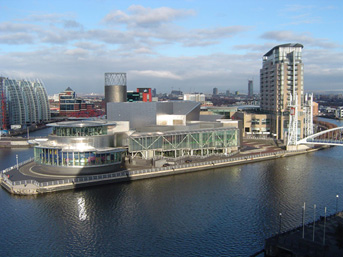 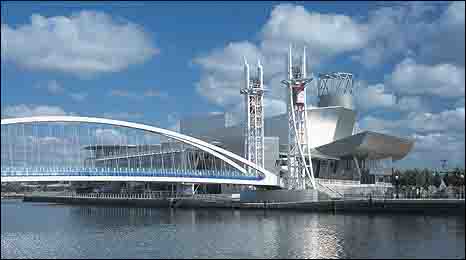

|
The Lowry
Situated on the waterside at the heart of The Quays, The Lowry is a stunning, award winning building housing two vibrant theaters, a studio space, relaxing art galleries, cafes, bars, a restaurant, souvenir gift shop and Salford's Tourist Information Centre.
With a huge variety of performances, The Lowry's Lyric and Quays Theaters offer a wealth of fabulous entertainment, including West End musicals, the very best in drama, live bands, famous comedians, plus world class dance and opera. From Peter Kay to the Kirov Ballet, Morrissey to Alan Bennett and much more, you'll find something to appeal to all tastes. Gallery entry is free and you can enjoy the work of one of the nation's favorite artists, L.S. Lowry, in changing exhibitions of his work which we hope will offer some surprises. At the same time, experience work by artists of local, national and international renown to compliment our Lowry exhibitions.
There's always something new and refreshing to see in our galleries. With family fun throughout the building, guided tours, the Meet Mr Lowry film, plus participatory activity for all ages, The Lowry is a great day out. Register online and be the first to know about what's on at www.thelowry.com/mylowry
Lawrence Stephen Lowry.
Born in Manchester, Lowry worked as a rent collector for most of his life. He intermittently studied art at Manchester and Salford art schools (1908-25). Lowry developed a very distinctive style marked by strong sense of composition and draughtsmanship. Most of his paintings were views of northern industrial cityscapes, inhibited by small, matchstick-like figures. Recognition came late in Lowry's life, partly due to his reclusive nature. He had major retrospective's at the Arts Council in 1966 and the Royal Academy in 1976. Although a popular artist, critical opinion is divided over Lowry. For some, he was an important British artist with an original vision, for others, his work was hackneyed and only valuable as a record of a now lost way of life.
|
Historic Places of Salford.
Salford has a great history.
Peel Park, now Salford Art Gallery, was owned by Sir Robert Peel, a local of Bury, Prime Minister and founder of the Metropolitan Police Force.
Ordsall Hall, near The Quays, was once the home of Sir John Radclyffe, who was given the privilege by king Edward III of escorting his bride to be, the Belgian Princess Phillipa to England.
Near MacDonalds (Fast food & hamburgers) in Acton Square ironically stands the house of William Harvey, founder of the Vegetarian Society.
Not far away stands Joule House, named after James Prescott Joule, the world famous 19th century physicist, who lived there for several years. In one of the houses on The Crescent lived Thomas Worthington, one of the great architects of the region.
Nowadays Salford boasts some fifty public parks and gardens, and has at last thrown off its unfortunate image of the "Smoky Old Town".
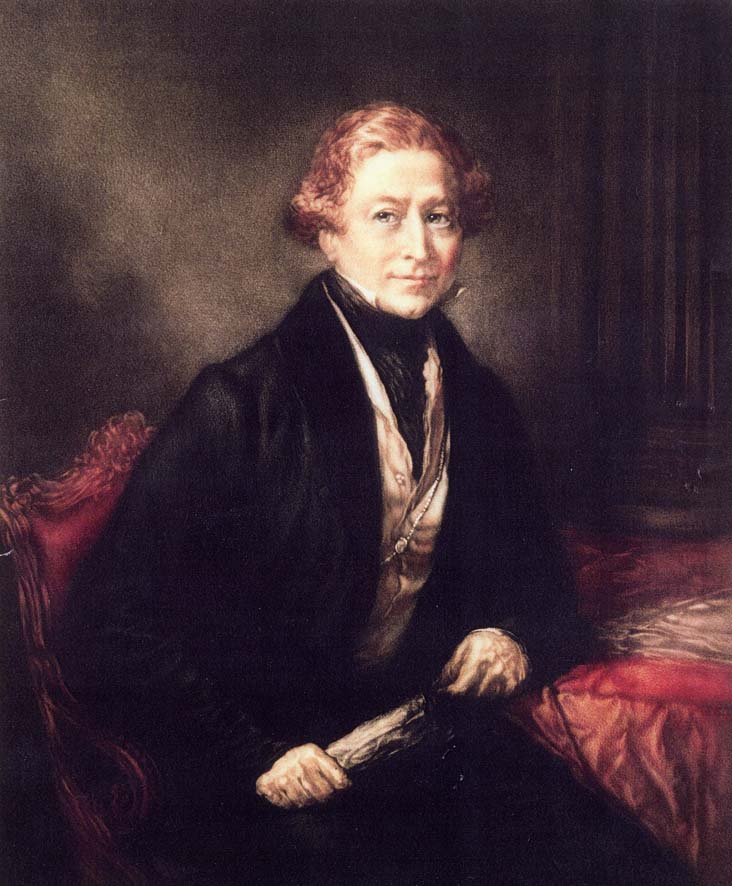 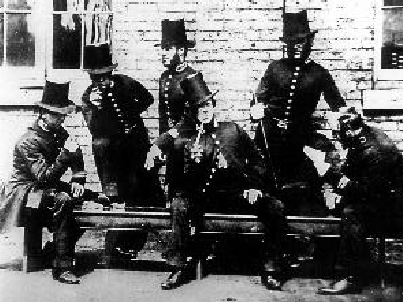
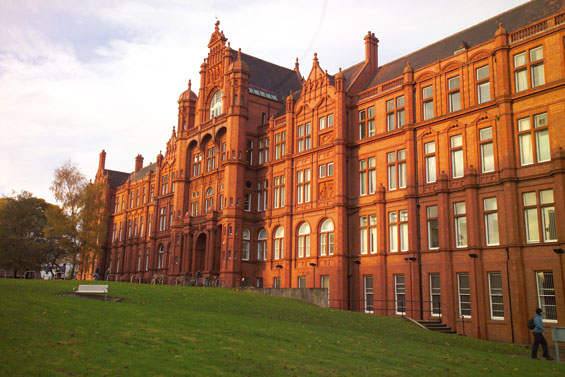

|
Sir Robert "BOBBY" Peel (1788 - 1850)
In Britain today all policemen are commonly referred to as 'Bobbies'. Originally though, they were known as 'Peelers' as they were the creation of one Sir Robert Peel. The Peelers were the Metropolitan Police Force, which Sir Robert founded when he was Home Secretary in Lord Liverpool's Tory Cabinet. Today it is hard to believe that Britain in the early 1800's did not have a professional Police Force and that one had to be created. Sir Robert Peel had already established the Royal Irish Constabulary in 1812, and it had proved to be a great success. It became obvious that something similar to the Irish force was needed in London, so in 1829 the Metropolitan Police Act was passed which provided permanently appointed and paid Constables. The first thousand of Peel's police, dressed in blue Tail-coats and top hats, began to patrol the streets of London on 29th September 1829. The uniform was carefully selected to make the 'Peelers' look more like ordinary citizens, rather that a red-coated soldier with a helmet. The 'Peelers' were issued with a wooden truncheon carried in a long pocket in the tail of their coat, a pair of handcuffs and a wooden rattle to raise the alarm. By the 1880s this rattle had been replaced by a whistle. To be a 'Peeler' the rules were quite strict. You had to be 6ft tall (or as near as possible), and have no history of any wrong-doings. These men became the model for the creation of all the provincial forces, at first in the London Boroughs, and then into the counties and towns, after the passing of the County Police Act in 1839. An ironic point however, the Lancashire town of Bury, birthplace of Sir Robert, was the only major town which elected not to have its own separate police force. The town remained part of the Lancashire Constabulary until 1974. Early Victorian police worked seven days a week, with only five days unpaid holiday a year for which they received the grand sum of GBP 1 per week. Their lives were strictly controlled, they were not allowed to vote in elections and required permission to get married and even to share a meal with a civilian. To allay the public's suspicion of being spied upon, officers were required to wear their uniforms both on and off duty. In spite of a huge success of his 'Bobbies' Peel was not a well liked man. Queen Victoria is said to have found him 'A cold, unfeeling, disagreeable man'. They had many personal conflicts over the years, and when he spoke against awarding her 'darling' Prince Albert an annual income of GBP 50,000, he did little to endear himself to the Queen. When Peel was Prime Minister, he and the Queen had a further disagreement over her 'Ladies of the Bedchamber'. Peel insisting that she accepted some 'Tory' ladies in preference to her 'Whig' ladies. Although Peel was a skillful politician, he had few social graces, and had a reserved, off-putting manner. After a long and distinguished career, Sir Robert came to an unfortunate end, he was thrown from his horse while riding on Constitution Hill in London on 29th June 1850, and died three days later. His legacy remains however as long as the British 'Bobbies' patrol the streets and keep the population safe from wrong-doers, and help lost tourists find their way back to the comfort of their hotels! Salford art gallery and museum now stands in Peel Park adjacent to the Crescent in Salford, so named because of the ox bow crescent of Manchester's main river, The Irwell.
Information and pictures courtesy of http://www.historic-uk.com/
|
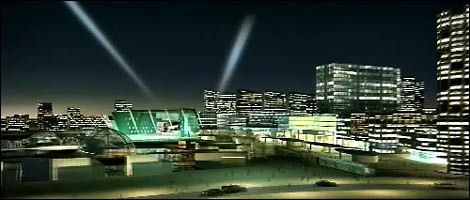
|
Salford Quay's future developments.
Instead of the old hub and spoke arrangement, where London is the hub and the regions are the spokes, the BBC of the 21st Century will be based on a fully networked model. A model that will harness the power of human networks, tapping into a pool of creative energy across the country. The move of the BBC headquarters to Salford is an important move and underpin's in a physical and rooted way the virtual possibilities of media which is important. Nevertheless it is recognized that new media is fundamental to the future of the BBC. This will include the central future media team that leads the development of the BBC's offering across the internet, digital TV and mobiles, and also the Media Research & Innovation team. These are two of our most important businesses and, together with Future Media colleagues supporting program-making areas based in Salford.
|
Other information courtesy of Salford History Online http://www.salford.gov.uk/index.htm
© Gooch 2010

